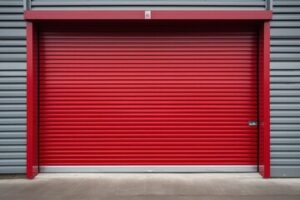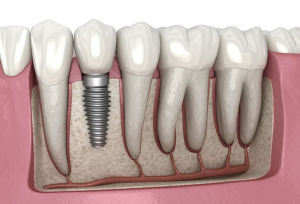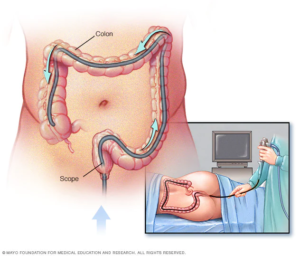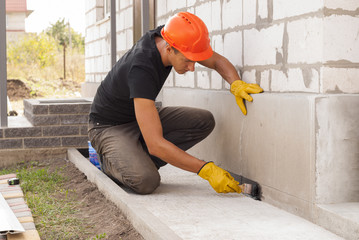There are several garage door options and features that increase energy efficiency, security, and home curb appeal. But the selection can be overwhelming.

Luckily, this guide will help you narrow your choices to find the right garage door for your home. Visit https://patriotgaragedoorok.com/ to learn more.
While front-facing doors get most of the “oohs and aahs” in terms of design and function, the garage door is the first thing people notice when they arrive at your home. For that reason, it needs to be not only functional and durable but also a real eye-catcher that enhances the beauty of your house.
Overhead doors are the most popular choice for homeowners as they tend to be affordable, easy to install and make the best use of space compared to other types of garage doors that swing or roll out. They also work best when coupled with automatic garage openers, making it simple to open and close the door without leaving your vehicle.
One of the most popular overhead doors is the sectional door that consists of panel sections connected with hinges and rolling upward on a curved track until they rest parallel to the ceiling or above the garage opening. The other type of overhead door, often seen on commercial premises, is the roller door, which rolls up into its housing directly above the garage opening like a sheet of paper in a towel rack.
Residential garage owners can choose from a large selection of residential overhead doors designed to fit the design and functionality requirements of any residence. They can be made from aluminum, glass, wood composite or insulated, and can be configured in a variety of ways to accommodate any space or layout. They can even be paired with high-performance features to provide optimum insulation and reduce loss of conditioned air. In addition, these doors can be equipped with a safety reversing sensor and photo eyes, which help prevent injury or property damage when the door is closing.
Sectional Doors
There are a few things to keep in mind when you’re shopping for a new garage door. Two of the most popular types are rolling steel doors and sectional doors. Both of these are great options for businesses that need a durable, secure, and efficient solution to their overhead door needs. The main difference between the two is that a roll-up metal slatted door rolls up into a coil above the opening and uses a single horizontal track to operate while a sectional door consists of hinged panels that bend along a vertical and curved track system, allowing it to sit parallel to the ceiling when open.
Both of these are available in a variety of materials and styles, which means you can find one that perfectly matches your building’s design. They’re also both easy to install and connect to an automatic opener, which is a convenient way to make your business run more efficiently.
Sectional garage doors also prioritize safety with built-in features, such as anti-drop mechanisms that prevent the door from crashing down in the event of a malfunction. Some manufacturers also include sensors that detect obstacles in the door’s path and can automatically reverse the direction of its movement to prevent injuries and damage.
If you’re interested in a sectional door for your building, be sure to check out the warranty and installation requirements before making any purchases. It’s also a good idea to test the operation of your garage door manually, including running it up and down to ensure that it moves smoothly. If you notice any signs of malfunction or problems with the door’s movement, contact a professional to have the issue fixed right away.
Slide to the Side Doors
A sliding door might seem to be an odd choice for a garage, but it’s become increasingly popular as homeowners look for new ways to make their space more functional. They’re typically used in sheds, patios and closets, but they work well in garages, too, especially if there’s limited overhead space.
Sliding garage doors open horizontally, just like a sliding window. This makes them easier to operate than a traditional garage door that opens vertically and requires a lot of head room to maneuver. These doors also provide a more stylish appearance that can add character to your home.
There are different types of sliding doors, but the most common ones are panel-hung doors that feature a track and rollers. Some have a butterfly motion that allows the panels to fold up into a small space. Panel-hung doors are more expensive than other sliding doors, but they’re still a great option for homeowners who don’t want to spend a fortune on a new garage door.
Another type of sliding door is a sectional door. These doors feature the same components as a lift-up sectional door, but they slide on a curved track instead of rolling up into a space above the garage. Sectional doors are usually made from steel, aluminum or wood and can be customized with different colors and finishes.
If you’re interested in getting a new sliding garage door, talk to your local installer about the available options for your home. They can tell you about the size, style and material options and help you choose a color and finish that complements your home. They can also install your door and ensure it’s functioning properly. They’ll need to examine the area where the garage door will slide, so they can make sure it’s level before installing the tracks.
Side-Hinged Doors
There’s something very traditional and charming about side-hinged doors. They swing open horizontally, much like a normal door would and are often used in garages that have shelving, gas meters, electrical units or other fixtures that would be compromised by a vertically opening overhead door.
Because there’s no lifting gear, side-hinged garage doors require less maintenance than other types of door and can be manually operated (with a manual lift arm). They are also available with windows for plenty of natural light.
If you’re thinking of upgrading them to automated operation, there’s a good choice of operators from Seip, Teckentrup, Novoferm and Hormann – all offering excellent reliability, speed and safety features. They work well with timber and GRP doors in particular.
GRP doors are a fantastic choice for modern and contemporary garages and come in a range of colours, finishes and surface options, giving a great deal of visual flexibility. They’re lightweight, low-maintenance and very resistant to corrosion. They’re not as thermally efficient as a timber or steel door though and so may need extra insulation for the colder months.
Cheaper softwood or single skin steel doors, on the other hand, can be a security concern as they can be easily forced open by a determined intruder and their weak frames make any type of locking relatively useless. However, if you’re buying a high quality set of timber or steel side hinged doors and have them properly installed, then they will provide a strong and effective barrier to opportunistic thieves and should last for many years to come. They are also available with glazed options, for added privacy and to let sunshine flood in.
Windows
Adding windows to your garage door provides natural light, improves visual appeal and helps reduce energy costs. They also allow for improved ventilation, which can help prevent the stale or musty odors that can sometimes occur in enclosed spaces. Garage door windows are available in a variety of shapes, sizes and styles to complement your home’s design and aesthetic preferences.
While many homeowners love the look of windows on their garage doors, there are some concerns that need to be considered. One major concern is that windows can make it easy for people to see inside of the garage, which can pose a security risk. However, this concern can be mitigated by using windows that are high enough to obscure prying eyes and installing additional security measures.
Another important consideration when considering garage door windows is the maintenance required. Window glass can easily become cloudy or smudged over time, and this can affect visibility and appearance. However, regular cleaning with a mild detergent solution can help keep them clear and looking new. Additionally, some window designs may require the use of protective coverings that can help guard against moisture and debris.
Finally, some garage door windows are made from acrylic instead of glass, which can be a good option for those who want to add the appearance of windows without sacrificing durability and energy efficiency. Acrylic is extremely tough and shatter-resistant, and it has superior insulating properties compared to glass. In addition, acrylic is a great choice for those who live in areas with harsh weather conditions. However, many homeowners still prefer the look of glass, and it can add a premium feel to their homes that may enhance resale value.








